Muqtada al-Sadr is famous for political U-turns, but has he crushed the protests that swept Iraq?
The Shia cleric is a political chameleon who has survived decades of national turmoil, Patrick Cockburn writes, but his controversial career shows that reforming a corrupt and dysfunctional government is near impossible

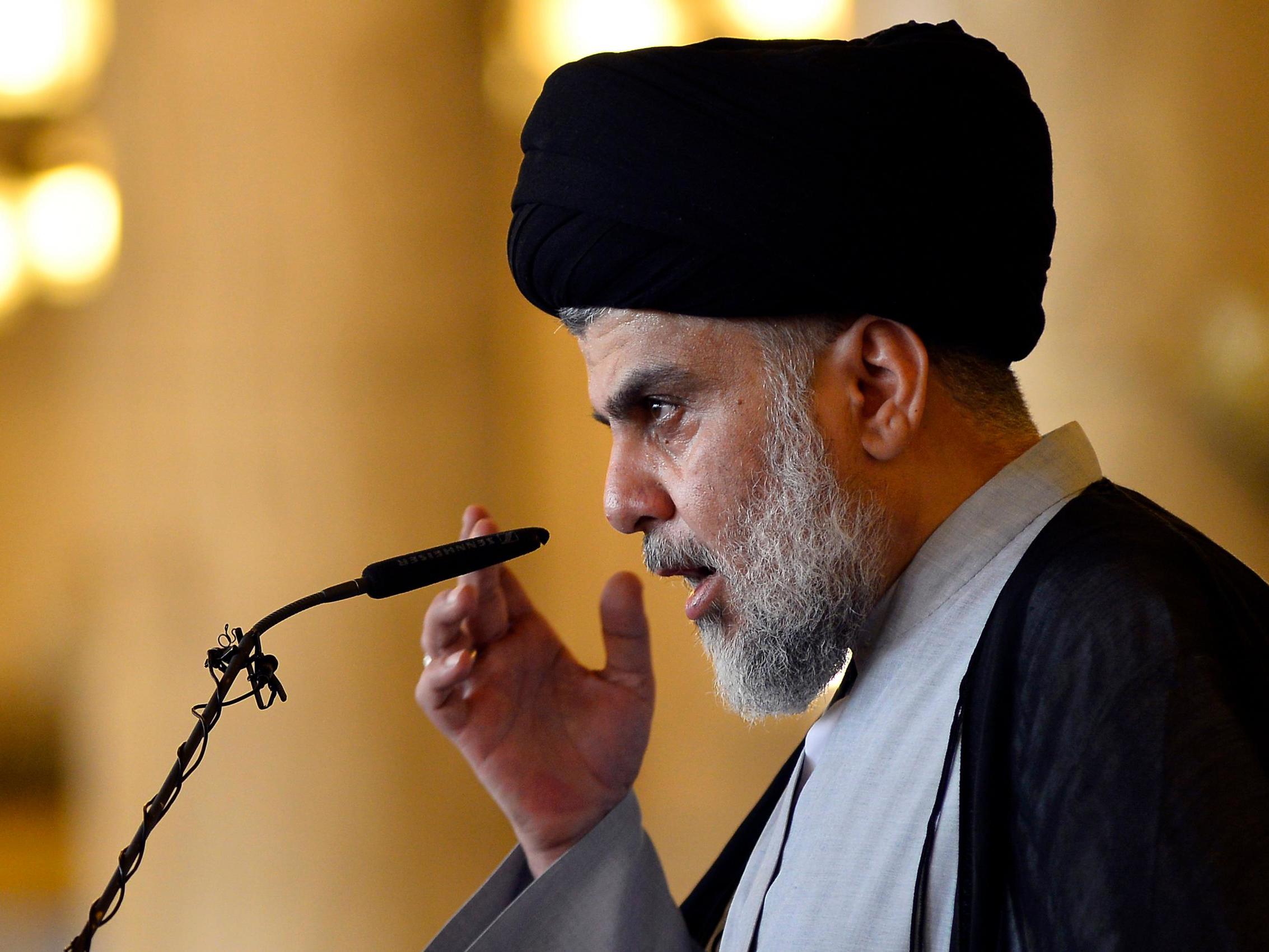
Muqtada al-Sadr is a populist Shia cleric, an arch survivor in Iraq’s permanent political crisis, and one of its most powerful leaders. He is criticised for being a senior member of the Iraqi ruling class while at the same time presenting himself as one of its most radical opponents. He has admitted that ministers from his movement have been among the very worst offenders in corrupt and dysfunctional governments that he has publicly denounced.
Yet his much-criticised ambivalence is typical of every Iraqi leader who has to manoeuvre between the multiple centres of power that dominate the political landscape. His career also helps explain why it is near impossible to radically reform the way Iraq is ruled, however unsatisfactory that may be.
Sadr’s balancing act has always been difficult and is now under severe strain, ever since marches, rallies and sit-ins demanding jobs, water, electricity and an end to corruption began to convulse Iraq in October last year. He and his supporters reinforced and protected protesters until January, but then became increasingly critical and hostile towards them.
Demonstrators are still being killed by security forces, but they are on the retreat. They have been forced to shift the central focus of their protests from Tahrir Square in the heart of Baghdad to Nasiriyah, an impoverished city in the far south of Iraq. Moreover, the government this week banned all public gatherings for fear of the coronavirus epidemic. The protest movement that once came close to turning into a general uprising looks, for the moment at least, as if it is being crushed. Sadr has been criticised for his change of stance, which may have proved a near fatal blow to the protests. “He changes his mind as often as he changes his shirt,” says Kamran Karadaghi, a former chief of staff to the Iraqi presidency.
Contradictory messages to his followers and to the Iraqi public in general came for months in the shape of tweets from the Iranian holy city of Qom, though he has now returned to his home city of Najaf in Iraq. He is officially there to pursue his religious studies, though this explanation is unconvincing because his home city of Najaf is the more prestigious Shia religious centre. Many Iraqis compare his issuing of political and religious instructions by tweet to Donald Trump. The former Iraqi prime minister Haider al-Abadi once expressed his frustration over this, saying that “these days I have to deal with two Sadrs: one in Najaf [where Sadr used to live] and one in Washington”.
Since 2016 the Sadrists have led, participated in or shown benign neutrality towards anti-government demonstrations in Baghdad, Basra and other Shia cities. On one occasion, Sadr himself symbolically broke into the Green Zone, the headquarters of Iraq’s political elite, and, on another, his supporters thrashed the parliament building. But the protests over the last four-and-a-half months are unprecedented in their scale, encompassing all the Shia provinces. They also differ from past demonstrations in the savagery – 669 protesters killed and more than 25,000 injured – with which the authorities have tried in vain to suppress them.
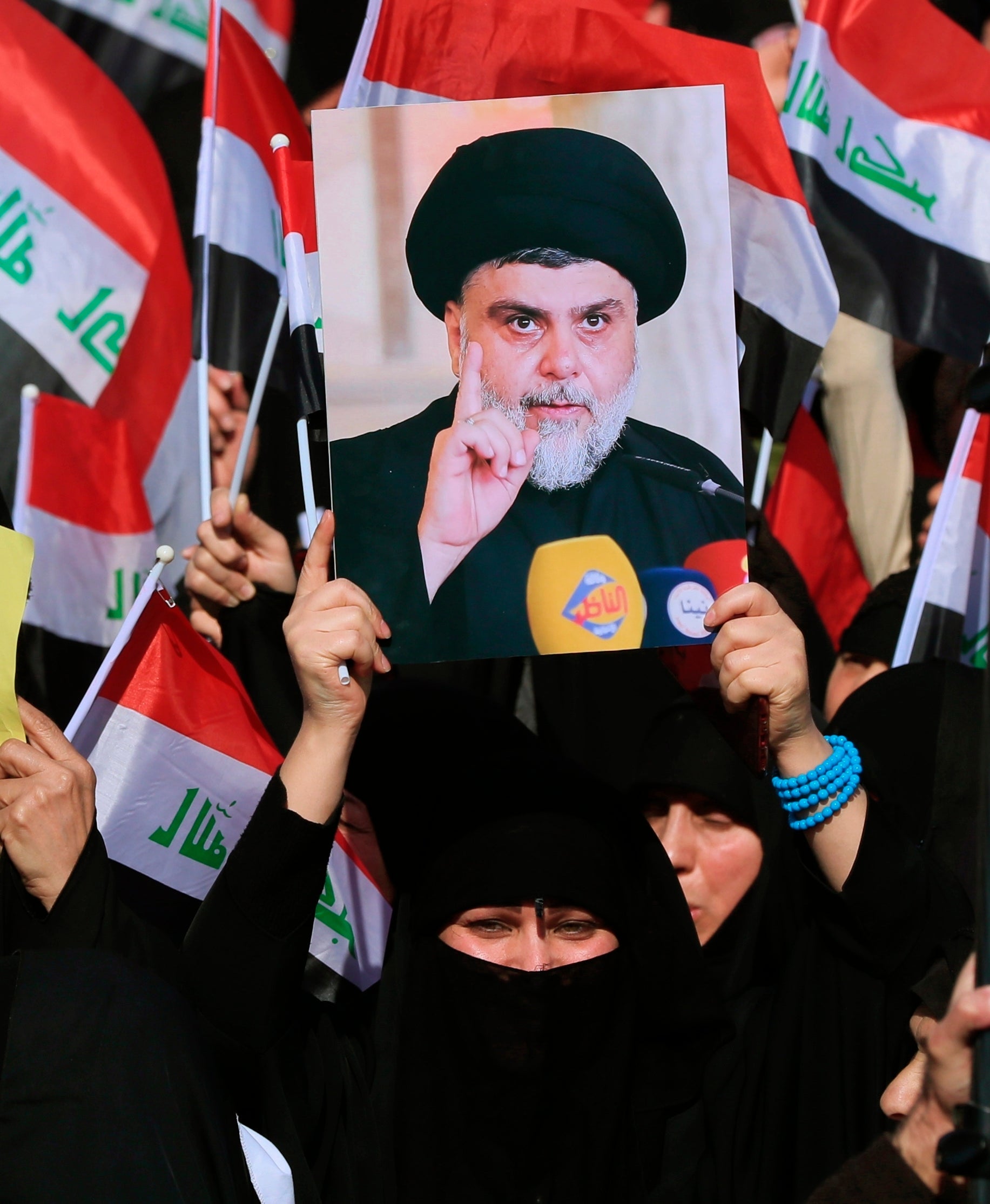
Sadr held back his support for the protests for several weeks until a second wave of demonstrations began on 25 October, showing that the protests were no flash in the pan and participants had not been intimidated by the heavy loss of life. He sent the so-called Blue Hats, formed from his Saraya al-Salam militia group, to reinforce and protect people encamped in places like Tahrir Square in the centre of Baghdad. Doubtless, their presence did do something to deter attacks by government and pro-Iranian paramilitaries, but it did not stop them.
The relationship between the Sadrists and the other protesters was always edgy and suspicious. The motivation of the Sadrists tended to be more conservative and religious than others in the movement who were frequently young, secular and progressive.
It was not an alliance likely to last: the breaking point came on 3 January when a US drone assassinated Iranian general Qasem Soleimani at Baghdad airport. Sadr had, at different times, opposed both Americans and Iranian influence, but in the days after the assassination he demanded that the 5,200 US troops in Iraq withdraw. This shift towards Iran went down badly with those who saw an Iranian hand – and General Soleimani’s hand in particular – behind the brutality and violence used to try to drive protesters off the streets.
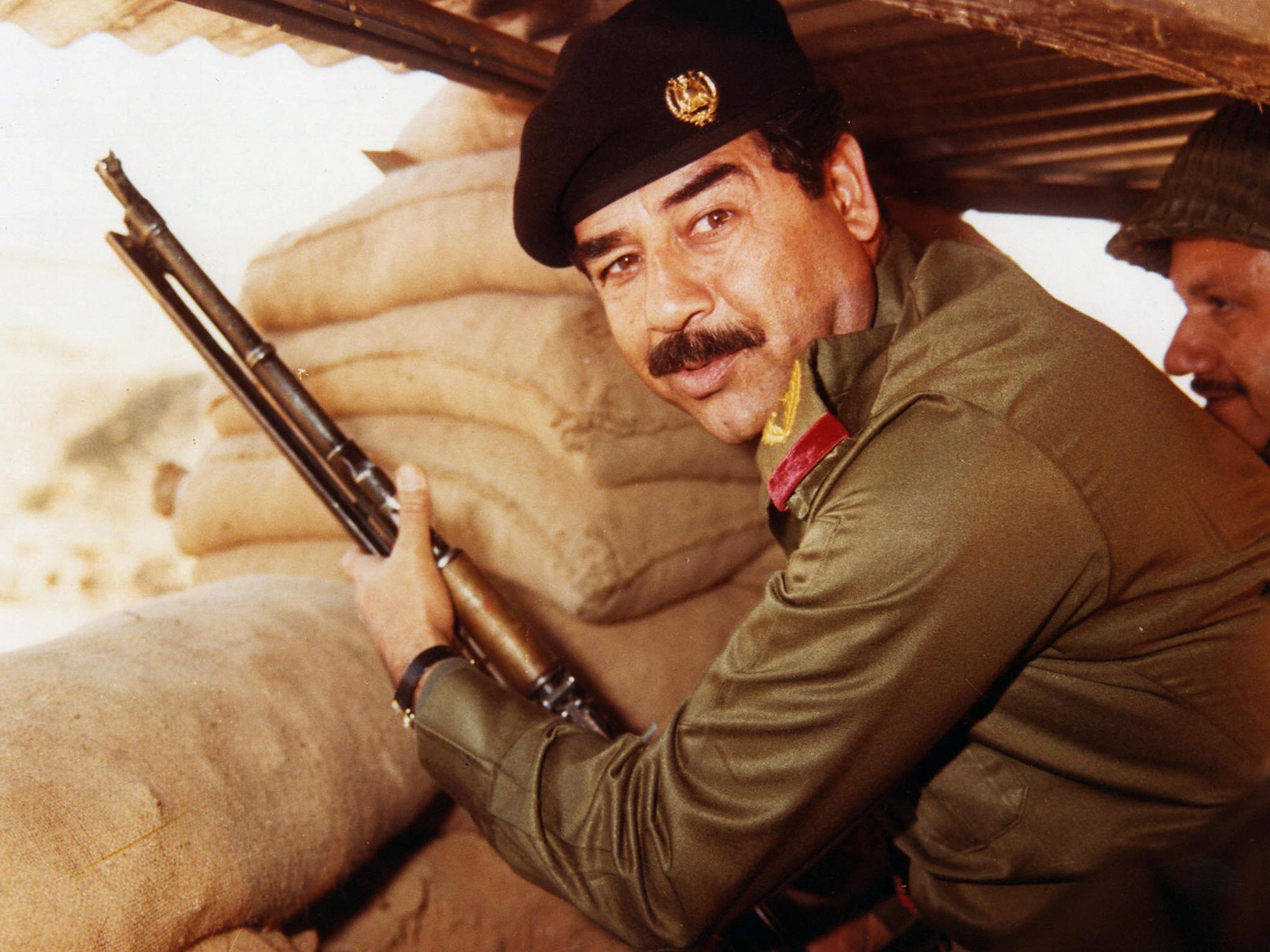
The split had a strong cultural as well as a political dimension. Sadr declared that it was immoral for men and women protesters to mix together and denounced them for using drugs and alcohol. He issued an 18-point code of conduct and claimed that the demonstrations were rife with “nudity, promiscuity, drunkenness, immorality and debauchery”. He warned against Iraq turning into Chicago, a curious comparison presumably based on perceptions of American city as seen in the eponymous musical.
But the differences between the Sadrists and the rest of the protesters, who are themselves by no means united in their aims and attitudes, goes far deeper than contrasting codes of social behaviour. What makes Iraqi politics so toxic is that any divergence in opinion can swiftly take a violent turn: in this case, the Blue Hats raided a protest camp in Najaf on 5 February and killed at least five people and wounded 20. On the following day, they took over Tahrir Square in central Baghdad, the heart of the protest movement, only to leave it two days later, declaring that they had successfully weeded out infiltrators. The centre of the protest movement shifted from Baghdad to Nasiriyah in Dhi Qar Governorate, which is far from the centre of power in Iraq.
How badly will Sadr and his core supporters be damaged by these swift changes of political direction? Has his ability to ride two political horses at the same time been permanently eroded? “Muqtada’s flip-flopping has exposed him as part of the political class,” says Hiwa Osman, an Iraqi writer and political commentator.

But too much can be made of this because every Iraqi leader is open to charges of hypocrisy and double-dealing since all must manoeuvre between different power centres. A fundamental characteristic of Iraqi politics is that power is fragmented. Iraqis say that there are four powers in the land: government, religious hierarchy, paramilitaries and tribes. “If you are in a traffic accident,” complained one Iraqi friend, “it does not matter whether you are right or wrong, but which tribe you belong to.” This is on a personal level, but Iraqi decision-makers must, in addition, take into account the divergent interests of the Shia, Sunni and Kurdish communities and, above all, the competing agendas of Iran and the US.
He compared Iraqis to ‘somebody who found a mouse in his house, then he kept a cat, then he wanted to get the cat out of the house so he kept a dog, then to get the dog out of his house he bought an elephant, so he bought a mouse again’
Sadr may be a political chameleon, but so are all his rivals. He differs from them primarily because he is better than they are at negotiating his way through Iraq’s political minefields. His many enemies invariably underestimate him and ignore his record of emerging more powerful than before from crises, which many forecast would be his downfall.
I interviewed Sadr in Najaf in 2013 and found him to be highly intelligent with a sophisticated and nuanced grasp of the mechanic of Iraqi politics. He emphasised that Iraqis had been traumatised by a “constant cycle of violence: Saddam, occupation, war after war, first Gulf war, then second Gulf war, then the occupation war, then the resistance – this would lead to a change in the psychology of Iraqis”. Neither of us knew it at the time, but Iraqis were on the verge of enduring another terrible traumatic experience when Isis captured Mosul the following year and massacred their way south towards Baghdad.
Sadr told me that Iraqis made the mistake of trying to solve one problem by creating another that was even worse than before by bringing in outsiders to solve their problem: thus the Americans overthrew Saddam Hussein in 2003, to the relief of most Iraqis, but they then found that they had to deal with the American occupation (it was as the leader of Shia resistance to the US that Sadr first became known to the wider world).
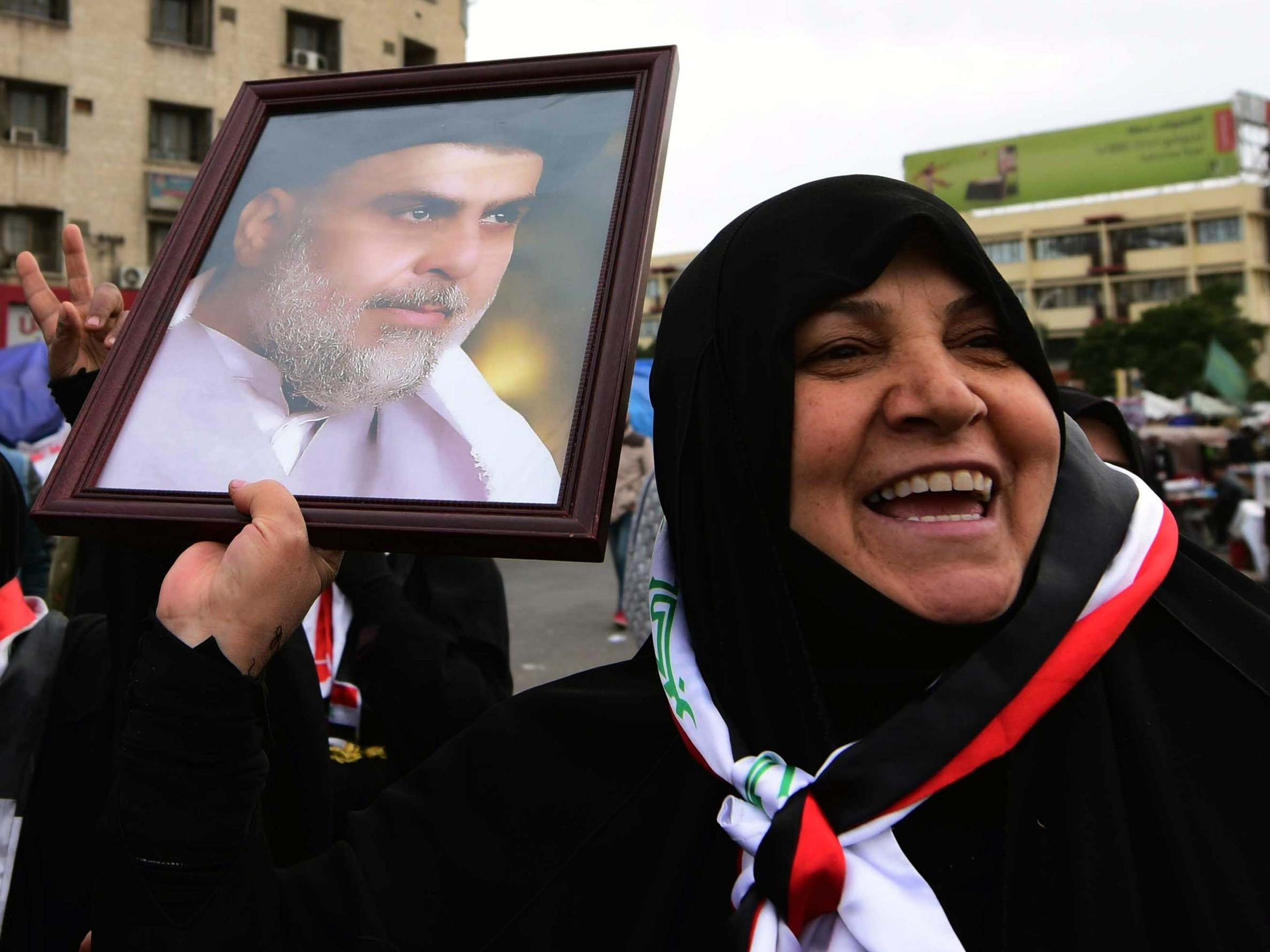
He compared Iraqis to “somebody who found a mouse in his house, then he kept a cat, then he wanted to get the cat out of the house so he kept a dog, then to get the dog out of his house he bought an elephant, so he bought a mouse again”. I asked how he would recommend that Iraqis deal with the mouse question, to which he replied that “by using neither the cat nor the dog, but instead national unity, rejection of sectarianism, open-mindedness, having open ideas, rejection of extremism”.
The problem is exacerbated in Iraq by the weakness of the central government and the large number of factions demanding their slice of the oil revenue cake
This wishlist is encouragingly close to the demands of the present-day protesters to whom Sadr was until recently allied, but is it realistic? The problem for Sadr and the protesters alike is that none of the solutions he outlined to me seven years ago were feasible then and the situation is not much better today. Iraqi society is splintered between those who have won and lost over the past 40 years so any form of national cohesion is virtually impossible. The Shia took over from the Sunni as the dominant community, but many Shia have gained little from this and are enraged at watching what they see as an elite minority looting the state.
Sadr himself has known violence and conflict all his life. He was 25 in 1999 when his father, the revered Shia cleric Mohammed Sadiq al-Sadr, and his two brothers were assassinated on the orders of Saddam Hussein. The Iraqi dictator feared that Sadr’s religious revivalist populist movement, that had won fanatical support from the poor Shia of Baghdad and southern Iraq, would rise up against him. Sadr just survived the murder of his father and brothers, living under house arrest in Najaf, where he was to re-emerge when the US-led invasion overthrew Saddam. He rapidly reassembled and expanded the Sadrist movement that acquired a powerful paramilitary wing known as the Mahdi Army (such groups in Iraq are sometimes called “militias”, but they are often more committed, experienced and better armed than regular military forces).
Sadr and the Mahdi Army were twice besieged by the US in Najaf in 2004 and he was much demonised by the US government and media. The Mahdi Army later provided death squads in the Sunni-Shia sectarian civil war in 2006-08 that targeted the Sunni minority in Baghdad. Sadr later distanced himself from the activities of the Mahdi Army, which he dissolved (the Sadrist paramilitary forces have since acquired a reputation for mysteriously appearing and disappearing according to the political needs of the moment). When I asked Sadr about the Mahdi Army’s role in sectarian murders, he responded that “people infiltrated the Mahdi Army and carried out these killings”.
He took a more emollient view towards the Sunni, Kurds and smaller minorities after 2007 as he became more political. His stance towards Nouri al-Maliki, prime minister between 2006 and 2014, was a mixture of frequent antagonism and sporadic cooperation. He warned in 2013 that Maliki’s violent repression of Sunni protests against persecution by the Shia security forces would have a disastrous impact, a prediction born out by the explosive rise of Isis the following year.
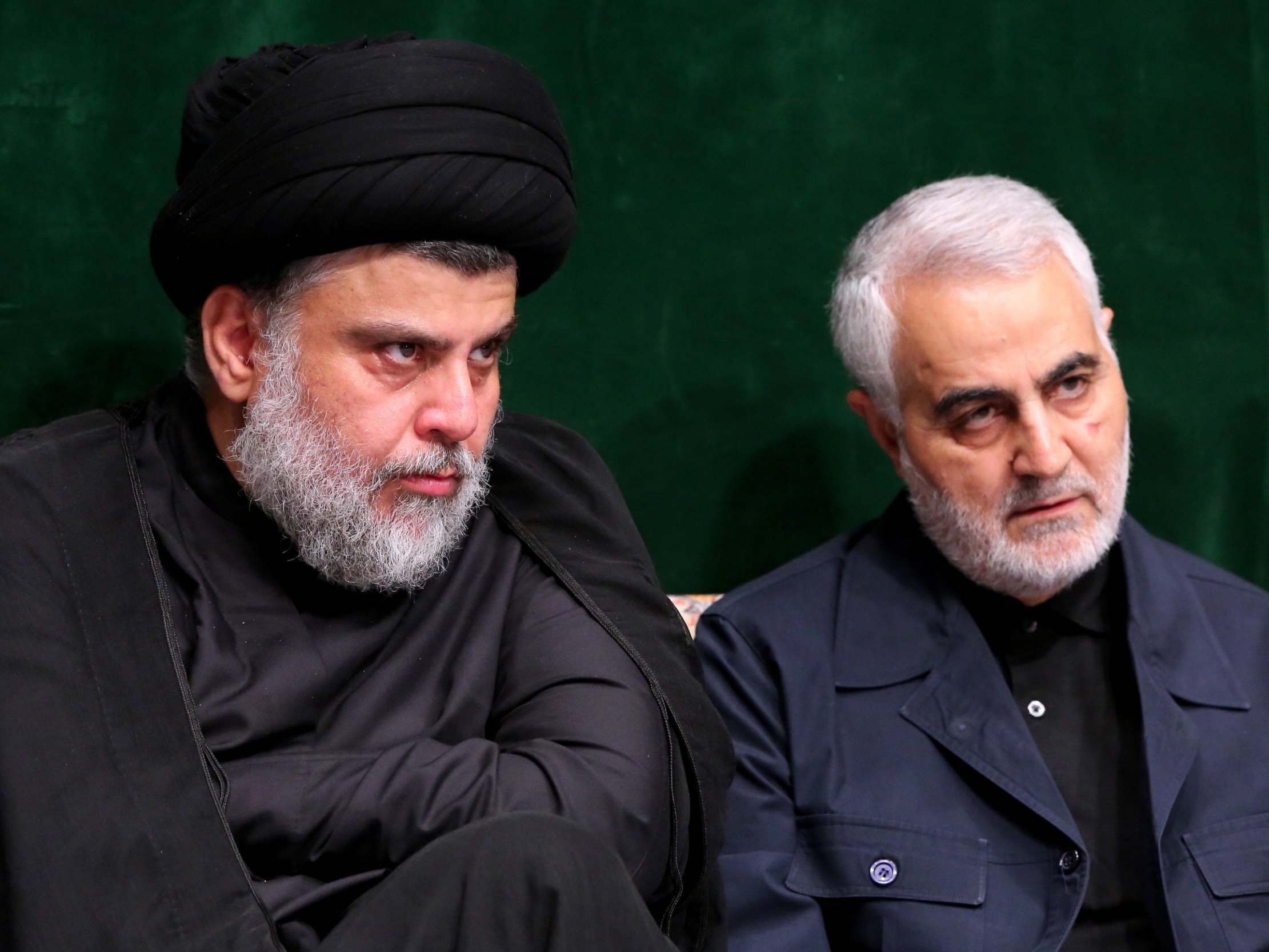
Politically, Sadr made himself and his movement a force without which no Iraqi government can be formed or long survive. He strengthened his radical and secular credentials by allying himself with the Iraqi Communist Party to form the Sairoon alliance in the last general election in 2018, in which it won the largest number of seats. An obstacle to reform is that Iraq has a patronage system in which parties reward their followers with jobs and ministries become the cash cows of whatever party controls them. The Sadrists decry this situation publicly but covertly exploit it.
Iraqi society is splintered between those who have won and lost over the past 40 years so any form of national cohesion is virtually impossible. The Shia took over from the Sunni as the dominant community, but many Shia have gained little from this and are enraged at watching what they see as an elite minority looting the state
Such a system is very difficult to reform, much less uproot, because so many Iraqis depend on it for their livelihoods. “Corruption” in Iraq is not confined to a narrow elite at the top: the Iraqi government employs 4.5 million people, though many of them do little work and all of them have a stake in the status quo. The number of beneficiaries cannot be infinitely expanded since every year the 40 million-strong Iraqi population grows by 1 million and 700,000 people join the ranks of the unemployed. The jobless say that the 6.5 million private sector jobs are poorly paid and insecure and the government jobs are the only ones worth having. The problem is exacerbated in Iraq by the weakness of the central government and the large number of factions demanding their slice of the oil revenue cake.
“I don’t think that the political class can be reformed,” says Hiwa Osman, a commentator with experience of government and journalism in Iraq. This is a problem for the radical street protesters in the Shia provinces, who have revolutionary slogans, but no practical revolutionary programme or the means to enforce it. The Sadrists likewise demand root-and-branch reform, but do not spell out what it would look like and are, in any case, too well integrated into the present system to want to replace it.
Osman says the protesters “know what they don’t want, but not what they do want”. They chant that “the people want the fall of the regime”, the famous slogan of the Arab Spring in Egypt, Tunisia, Syria, Libya, Yemen and Bahrain in 2011. The precedent is ominous: in all cases, aside from Tunisia, the protest movements led either to the disintegration of the state (Yemen and Libya) or to the establishment of a more vicious autocracy (Egypt, Syria, Bahrain).
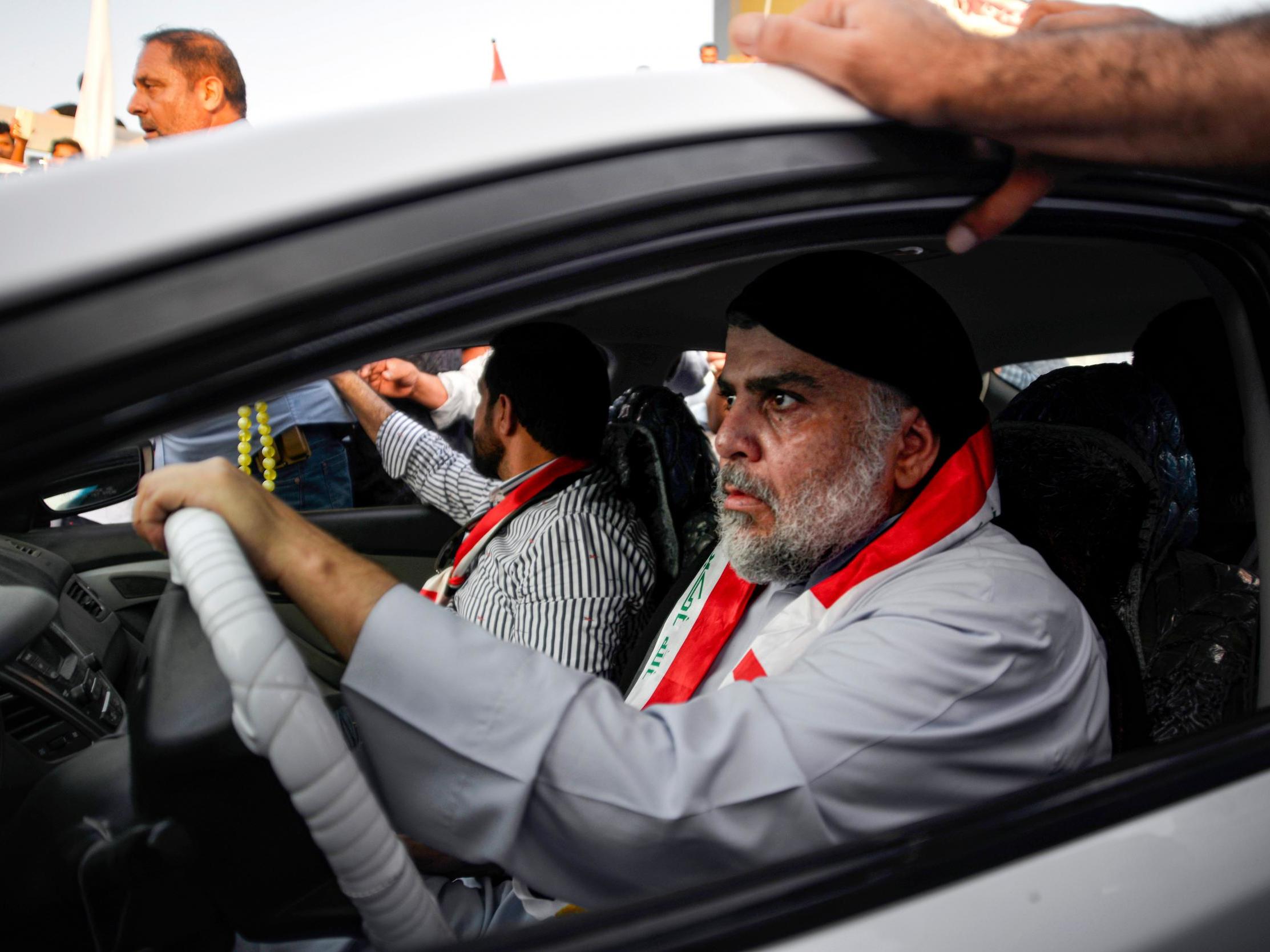
Successful reform or revolution change will always be difficult in Iraq where society is divided, the state weak and the tradition of political violence well established. In addition, Iraq has become the arena where the US-Iran conflict is being fought out.
The US is seeking to squeeze Iraq into complying with intensified economic sanctions on Iran which means cutting essential imports of Iranian gas, electricity and other products. To force the government in Baghdad to go along with Trump’s policy of “maximum pressure” on Iran, the US is threatening Iraq’s access to its oil revenues, which are held in the Federal Reserve in New York and delivery of which was delayed by the US in January. Iraq cannot survive without this money: “We are on a knife’s edge,” said an official.
The outlook for the protesters in Iraq achieving some progressive goal was never good, but got worse with the assassination of General Soleimani. His killing marked an escalation in the US-Iran conflict, turning it into an existential struggle for the Shia ruling elite in Iraq, as well as for the rulers of Iran. The US and Iran are rocking a boat that is already low in the water. Sadr predicted seven years ago, just before Isis’s terrifying attack, that Iraqis faced “dark times”. The country still does.
Join our commenting forum
Join thought-provoking conversations, follow other Independent readers and see their replies
Comments